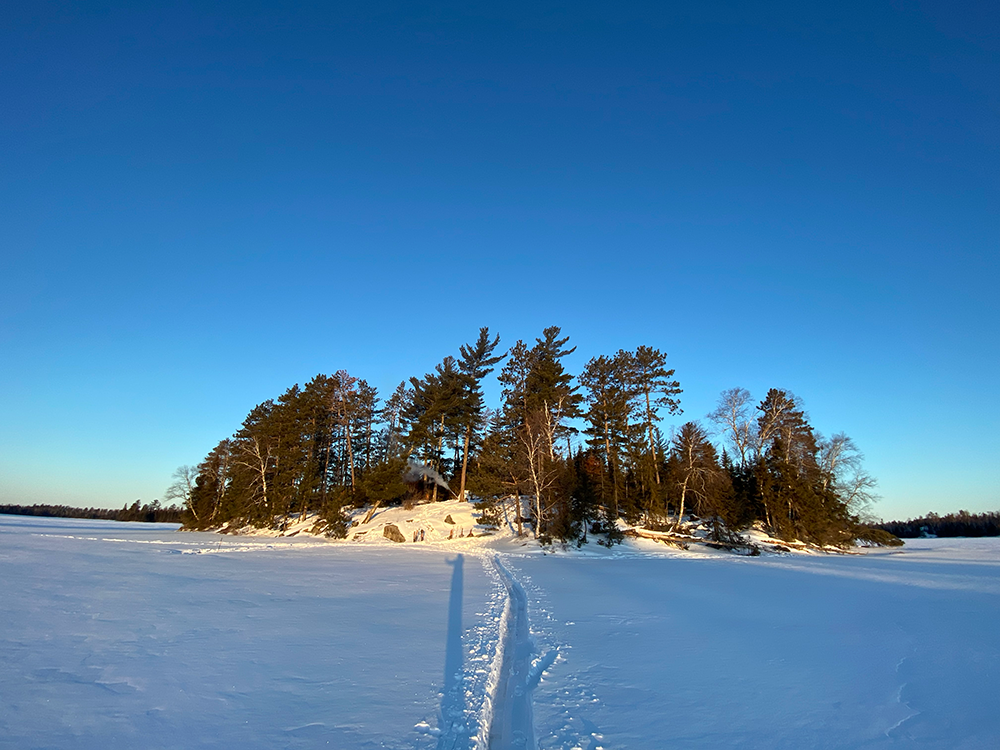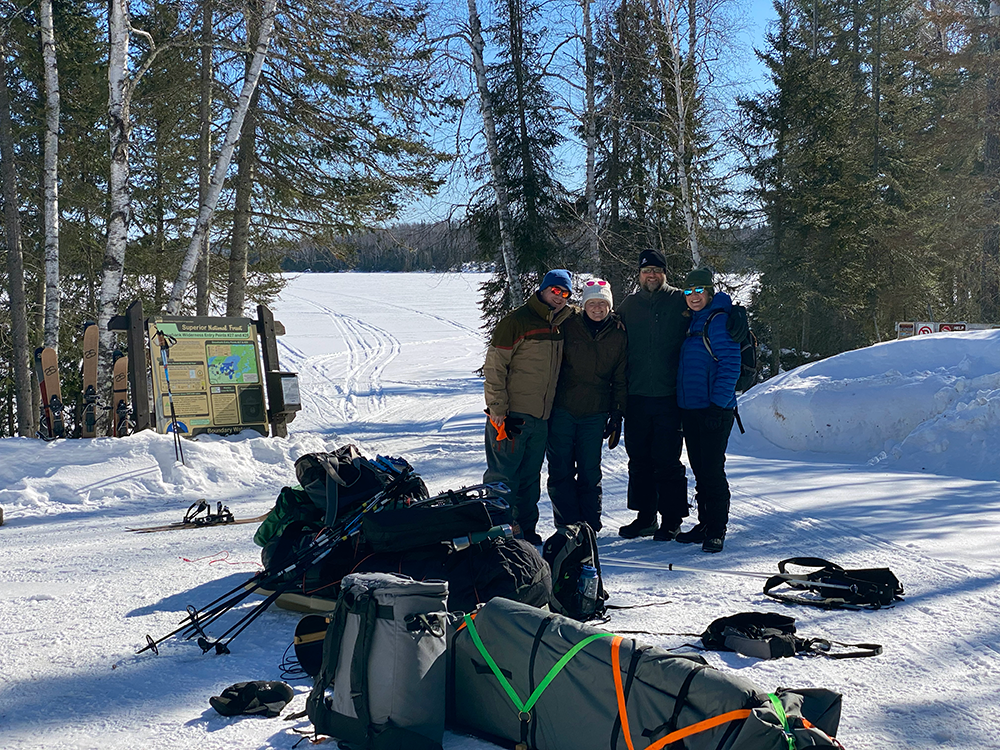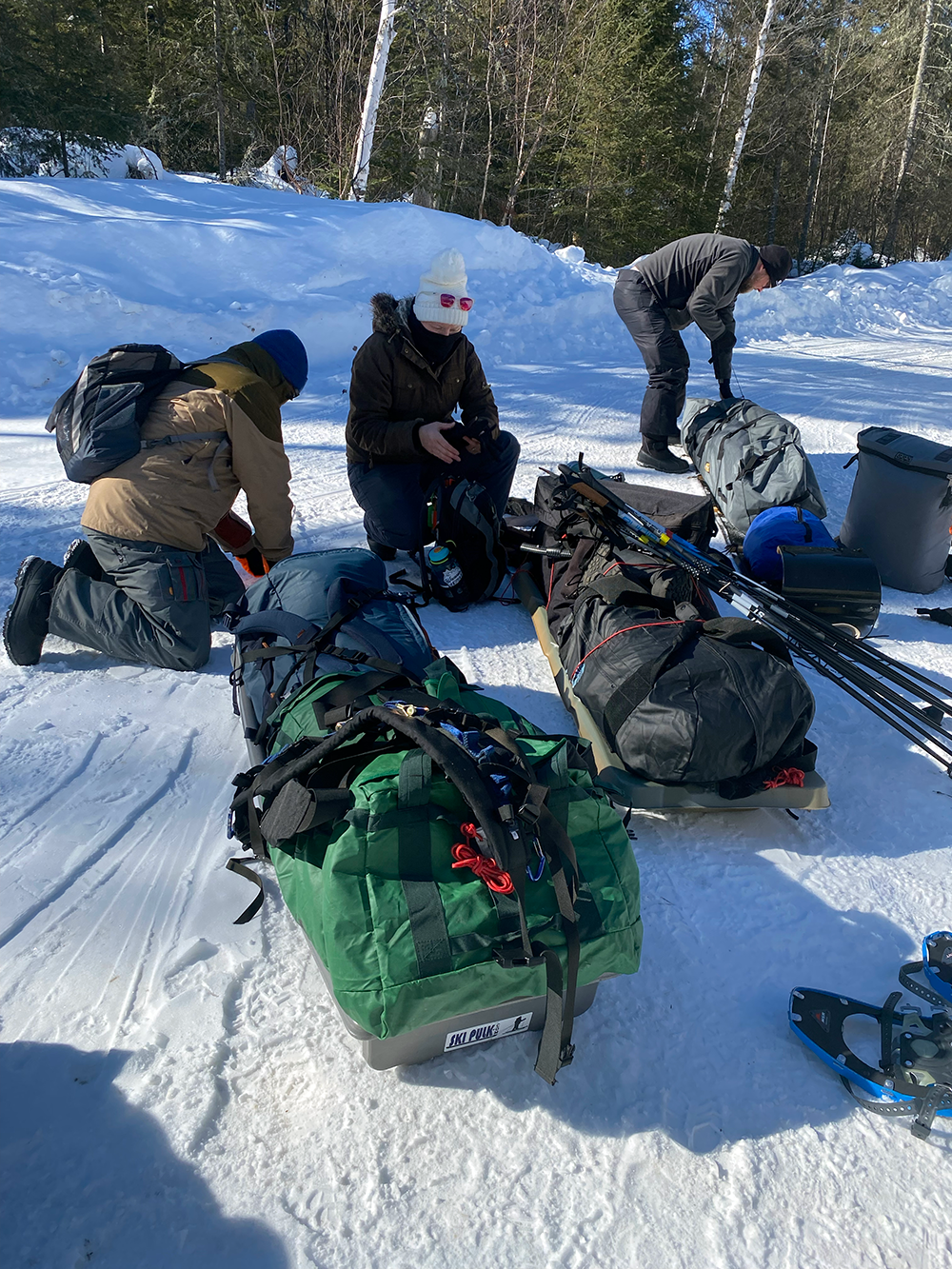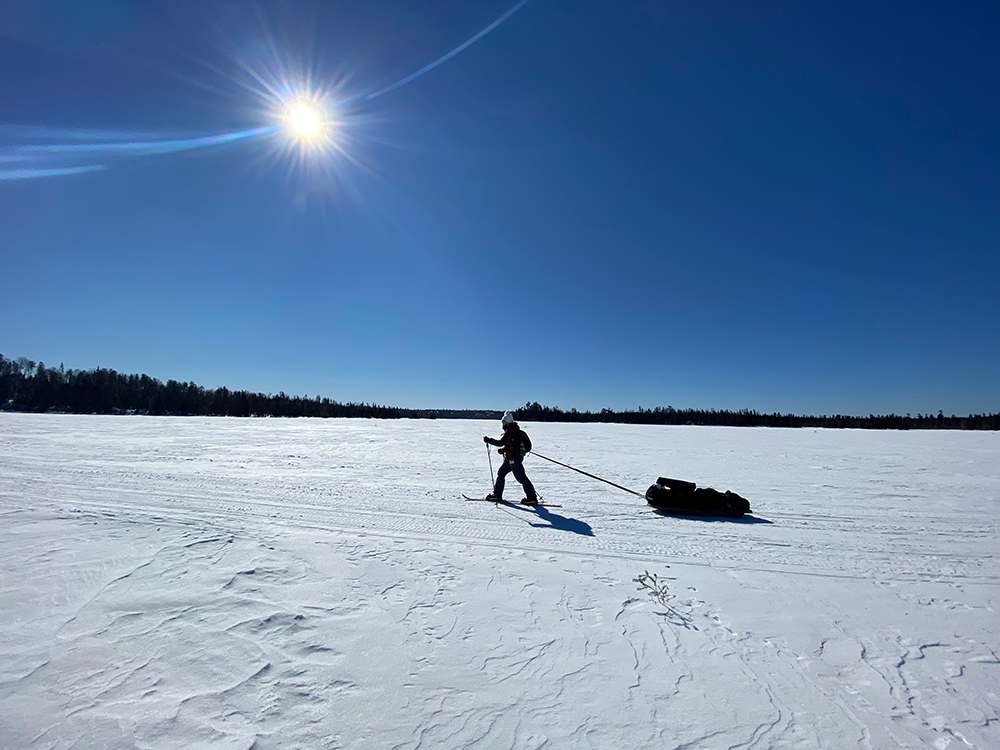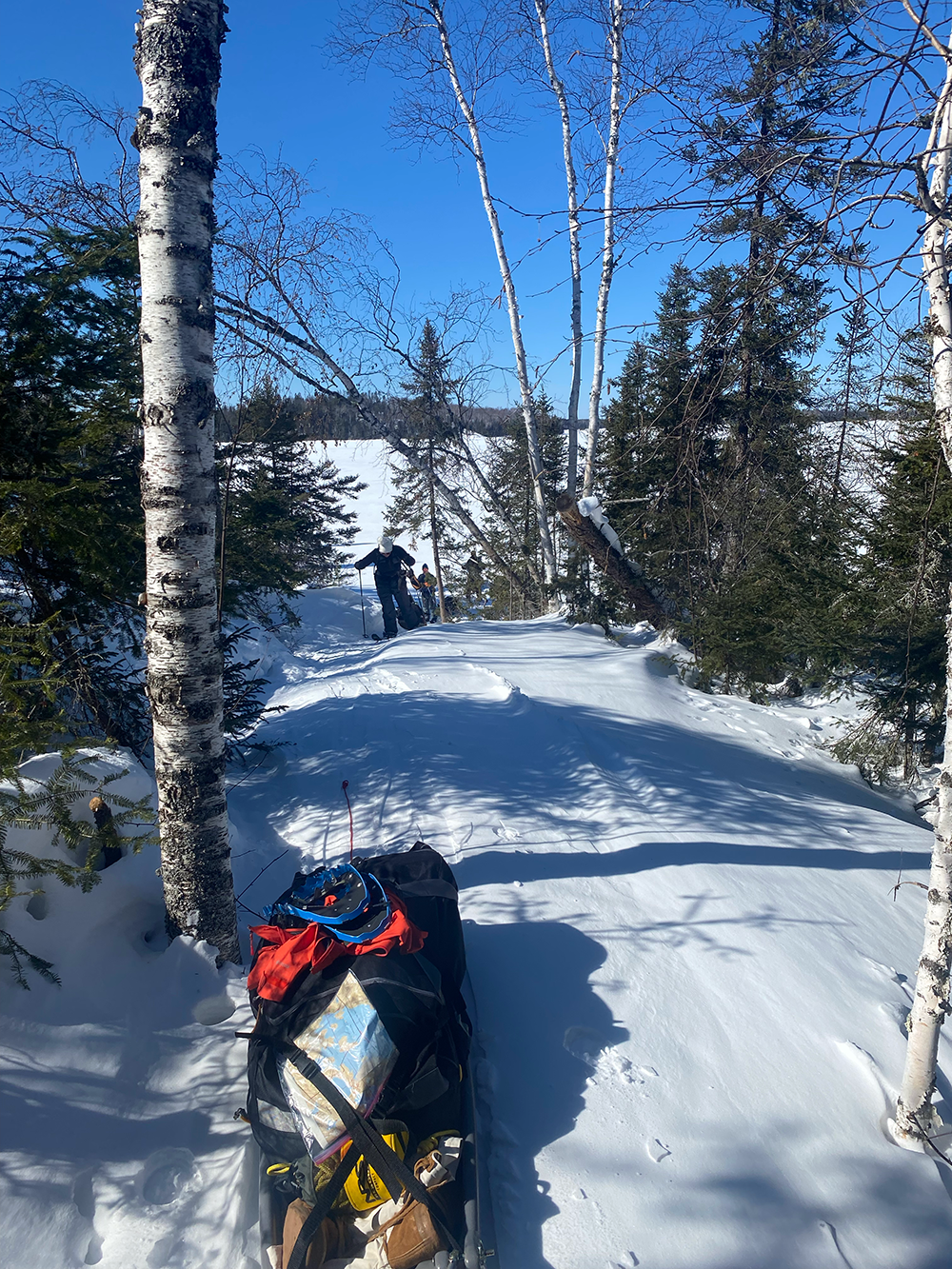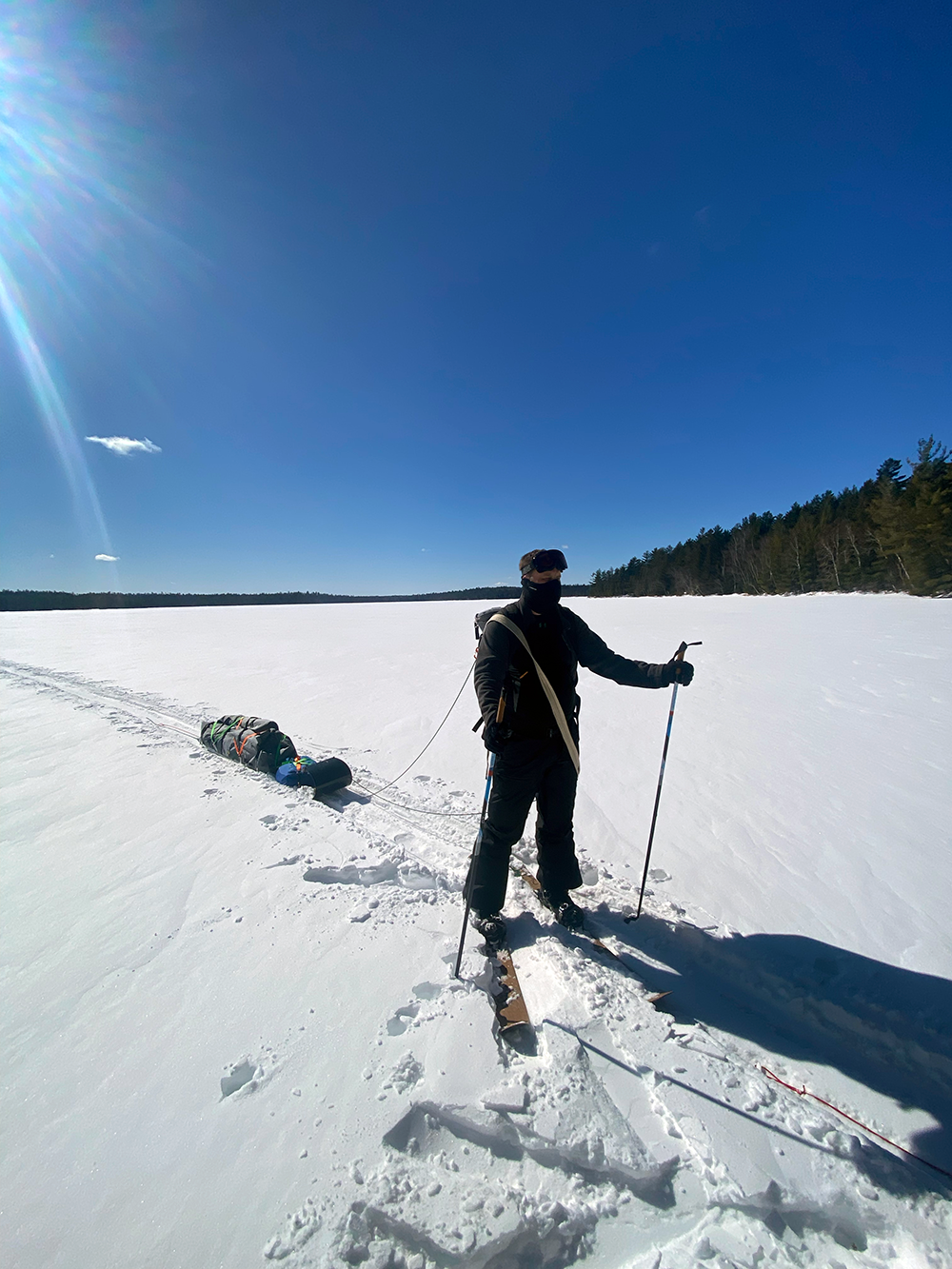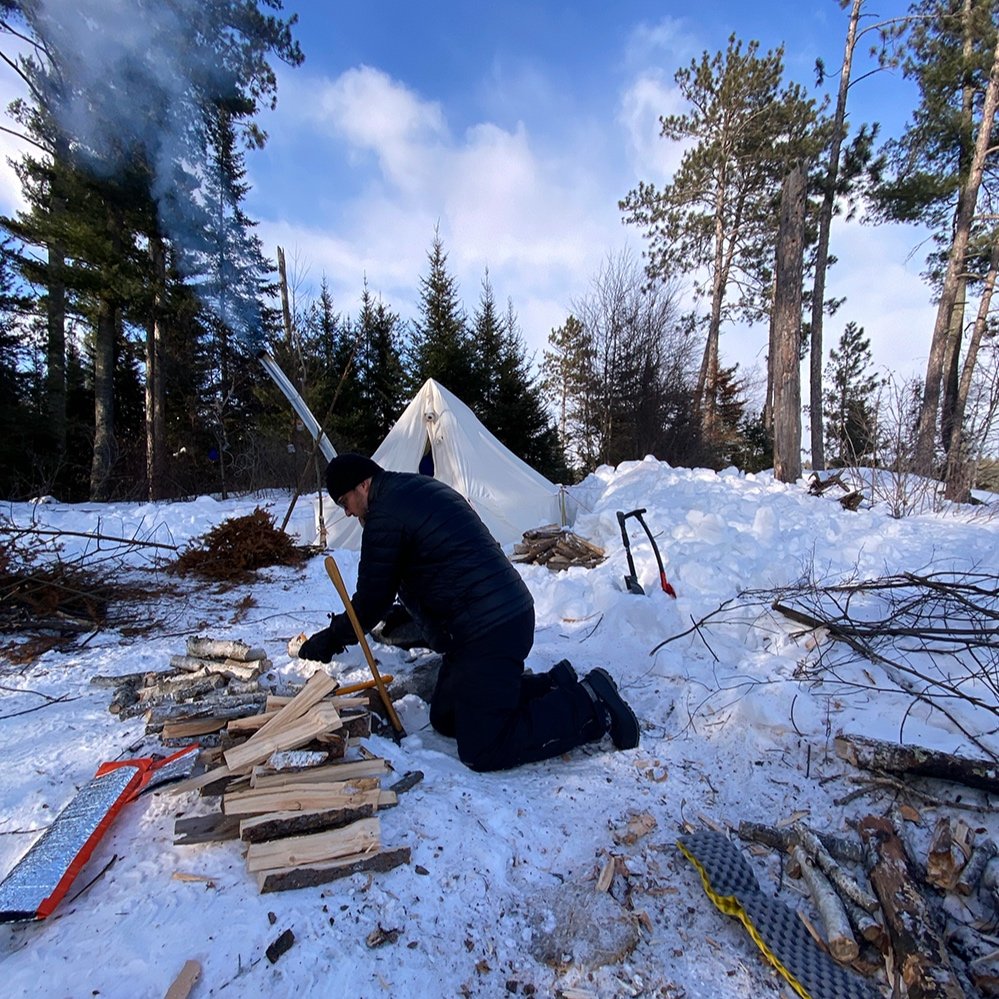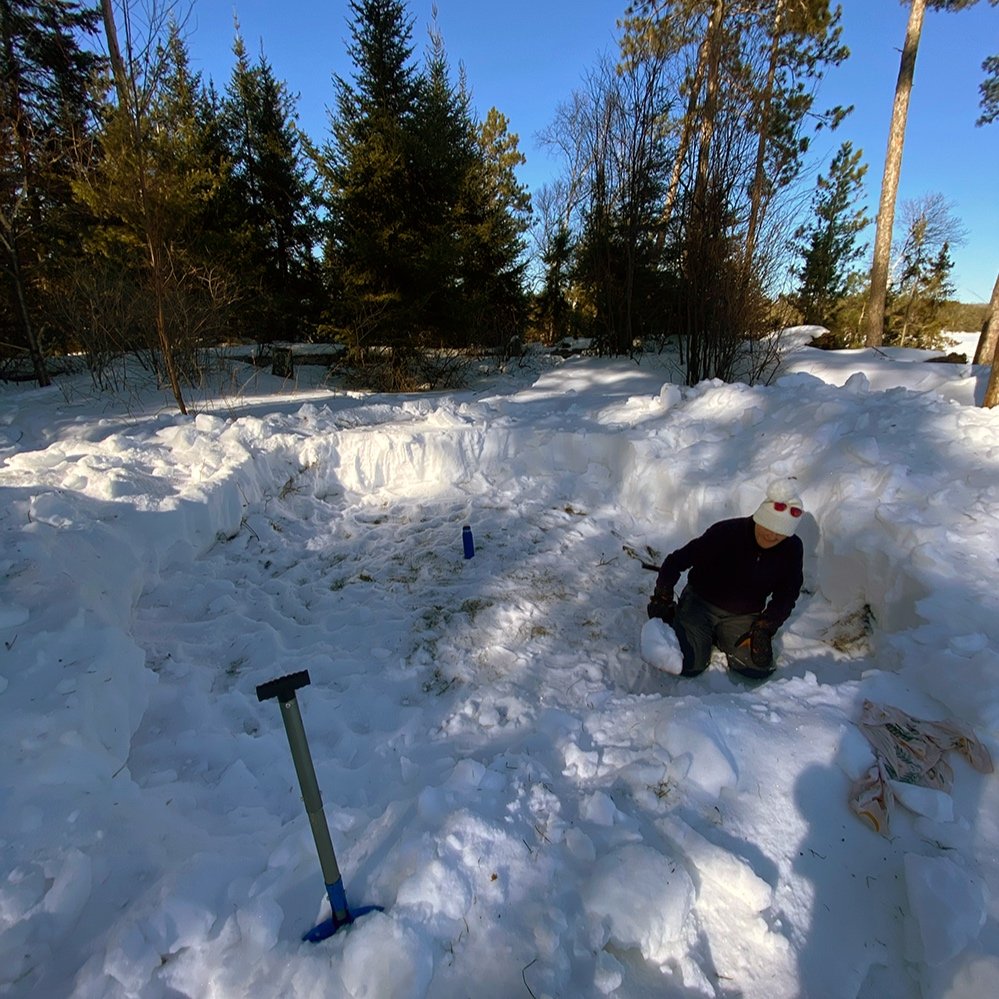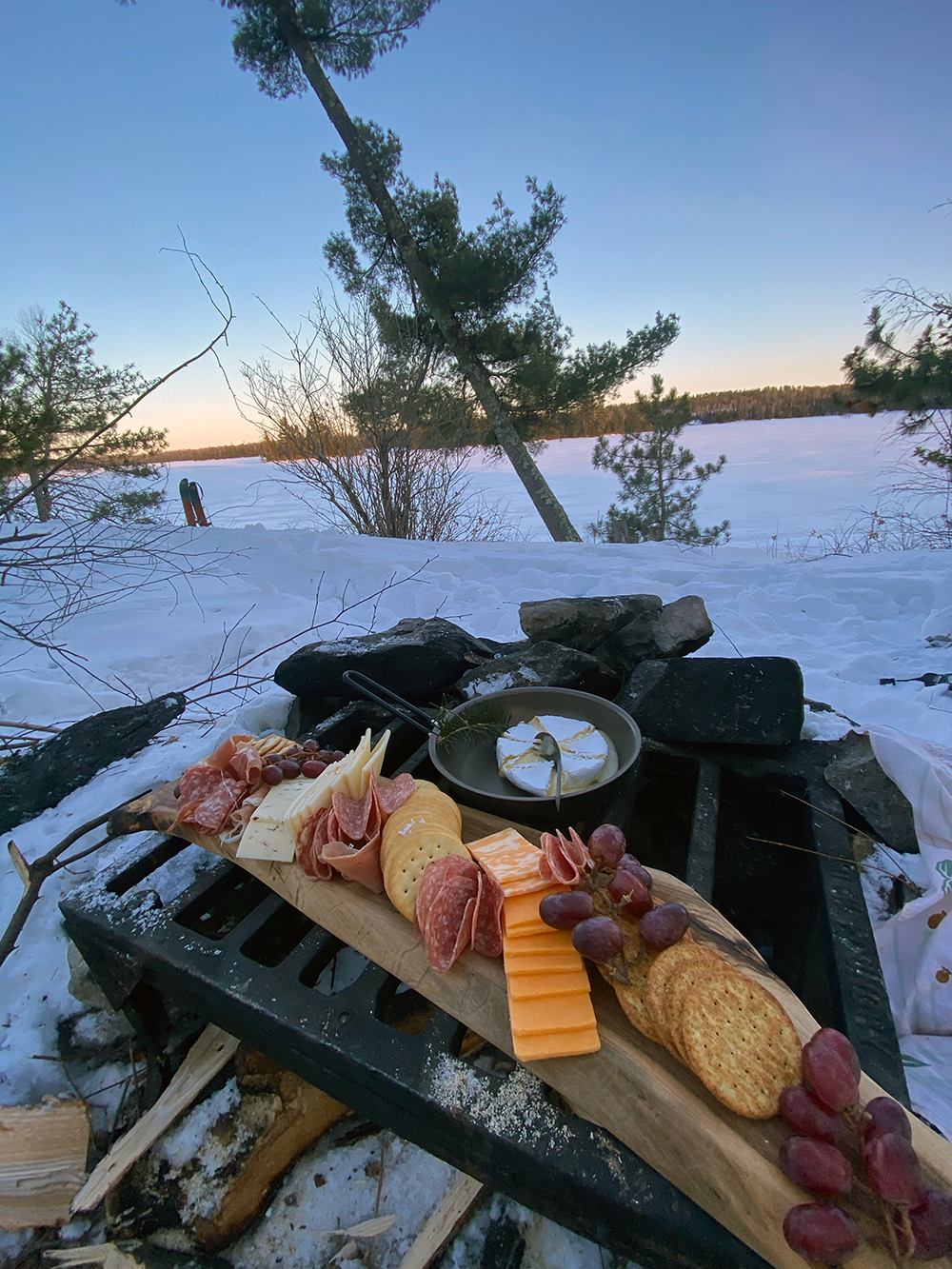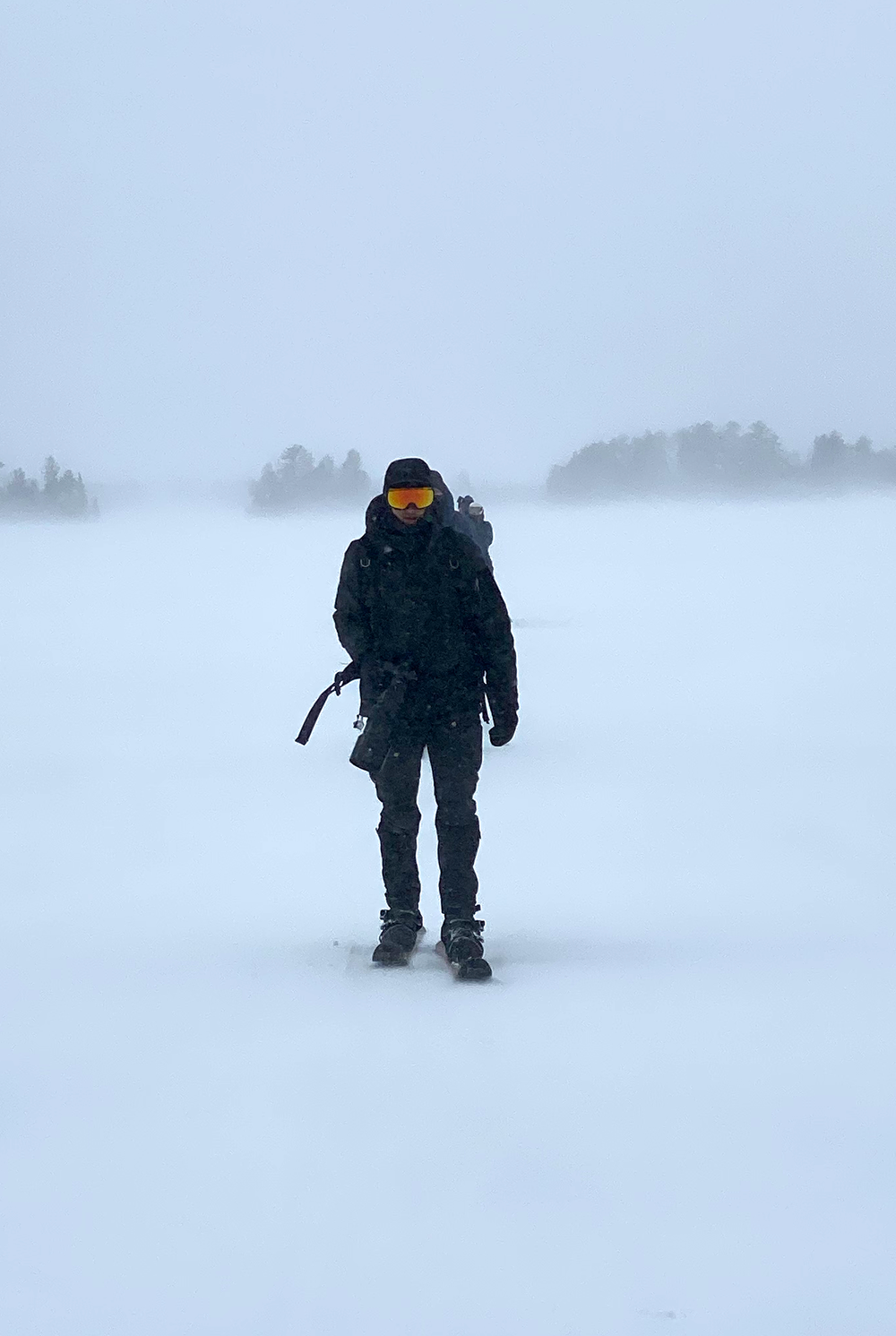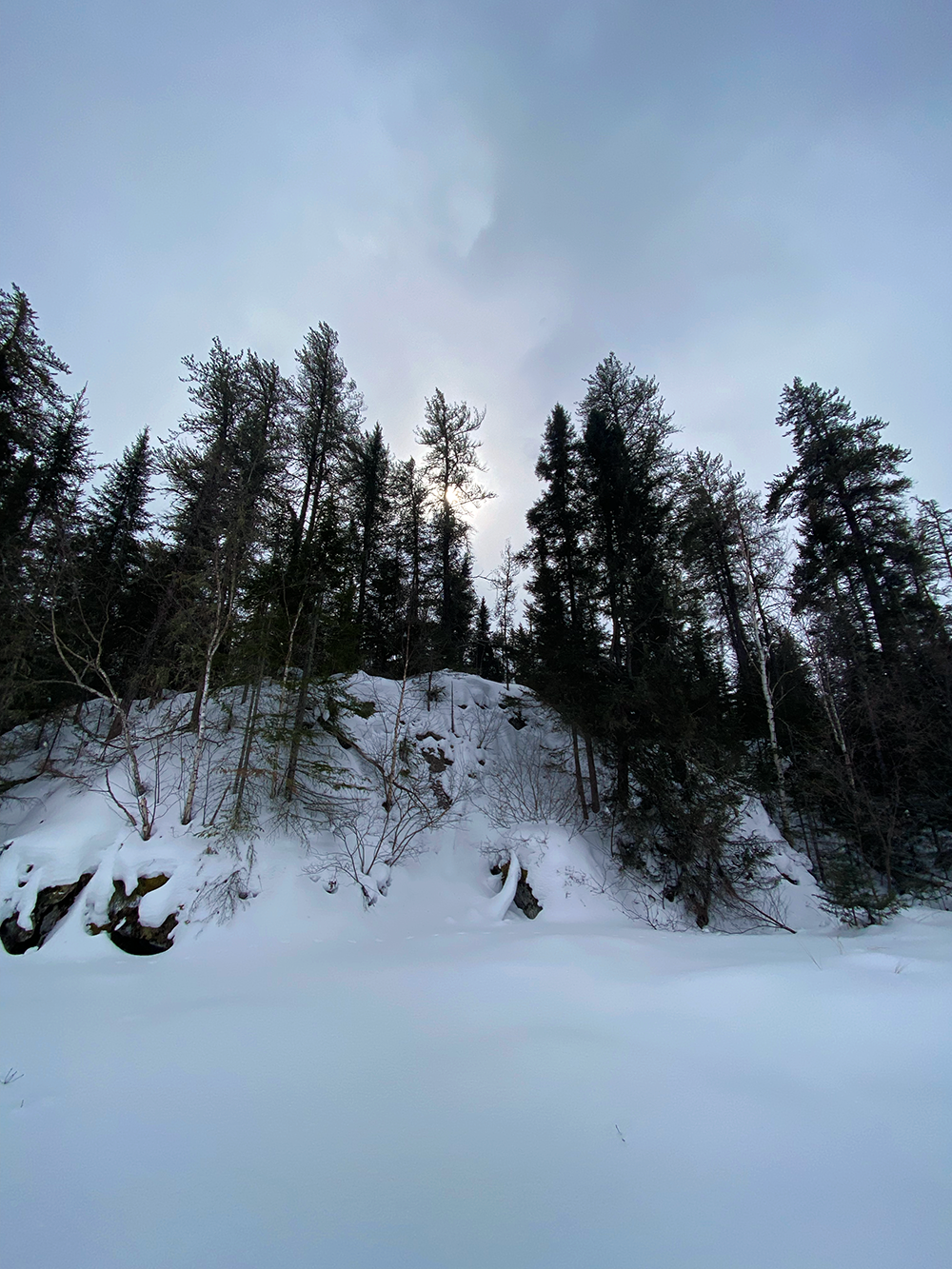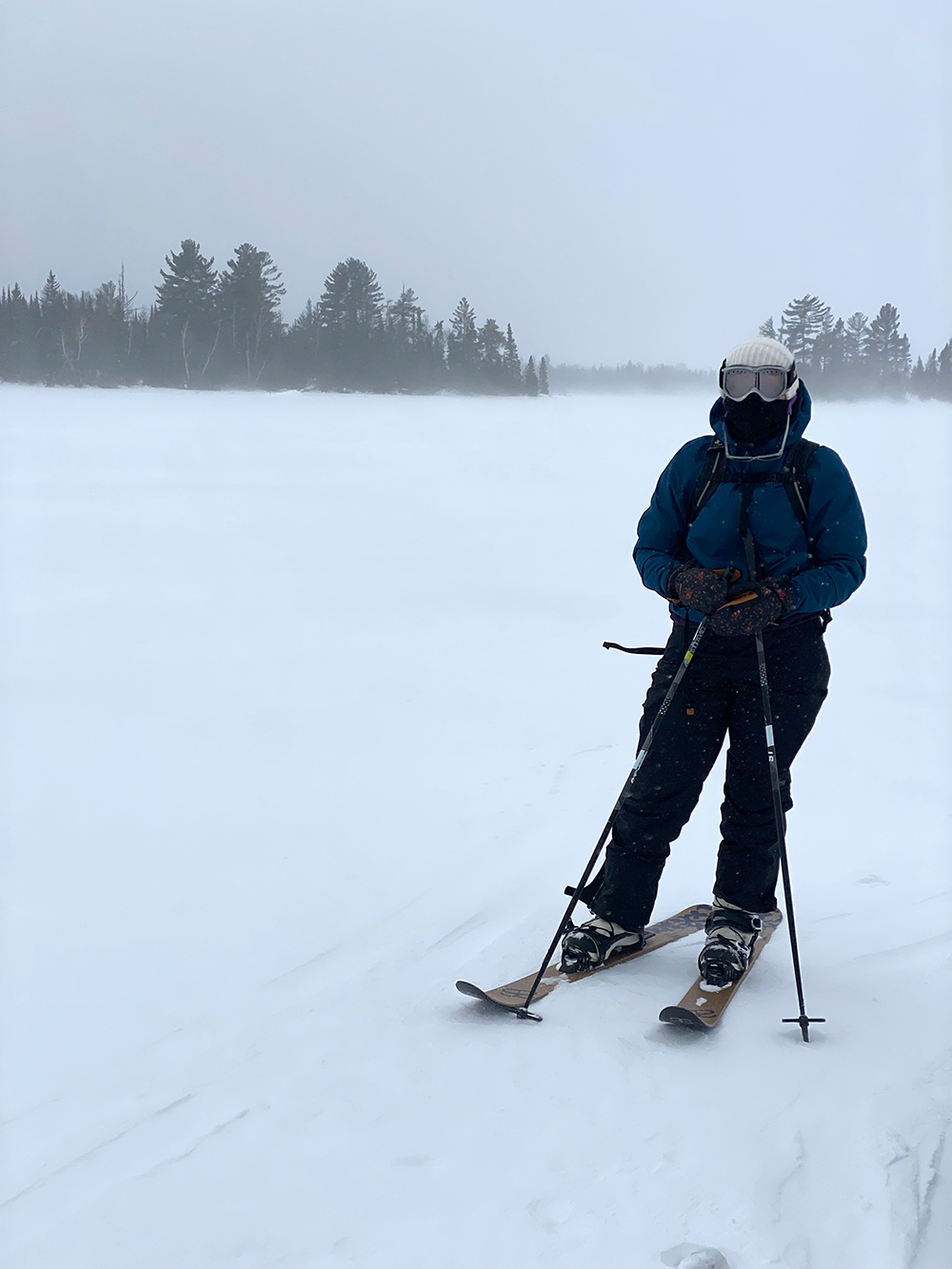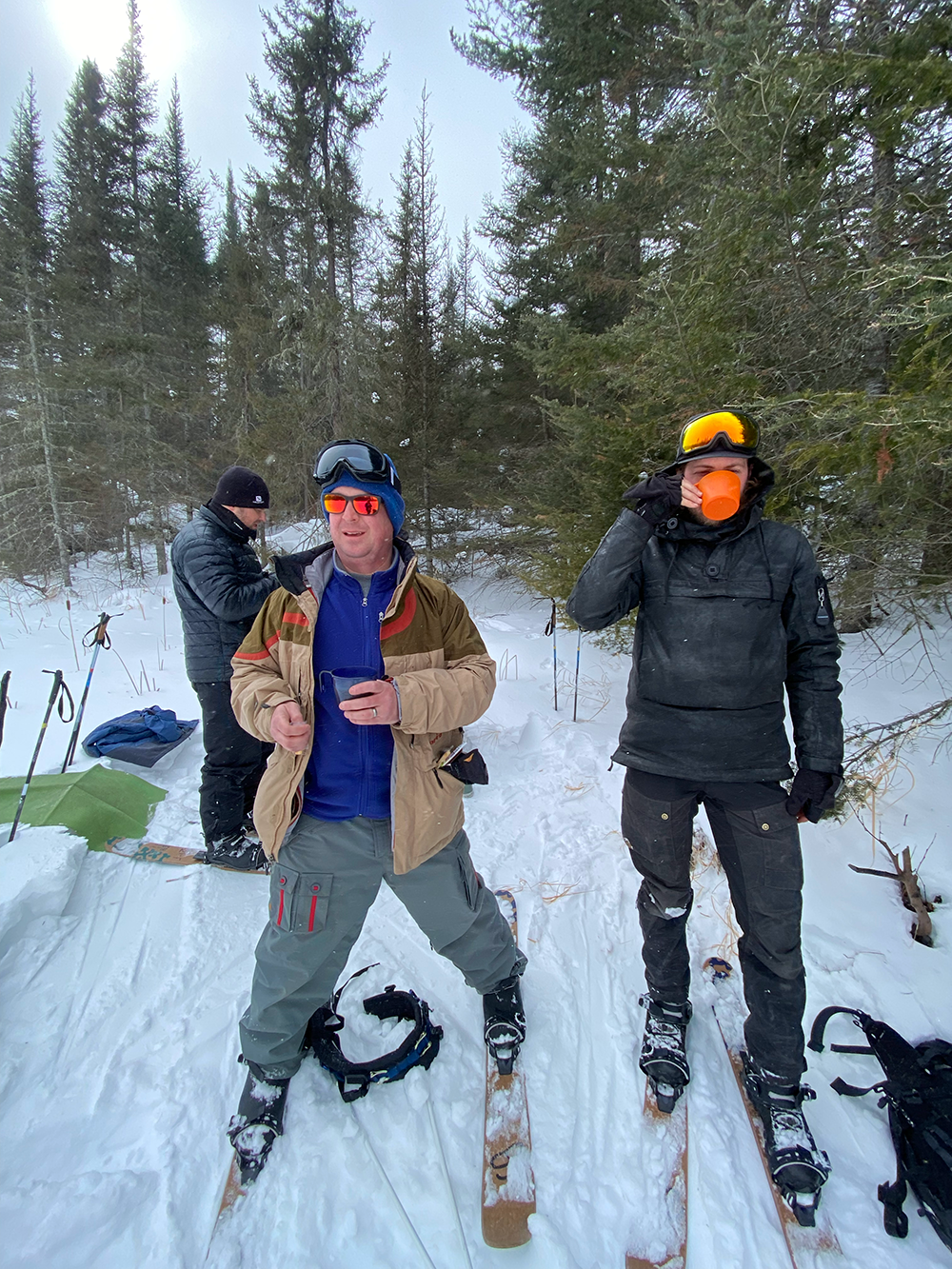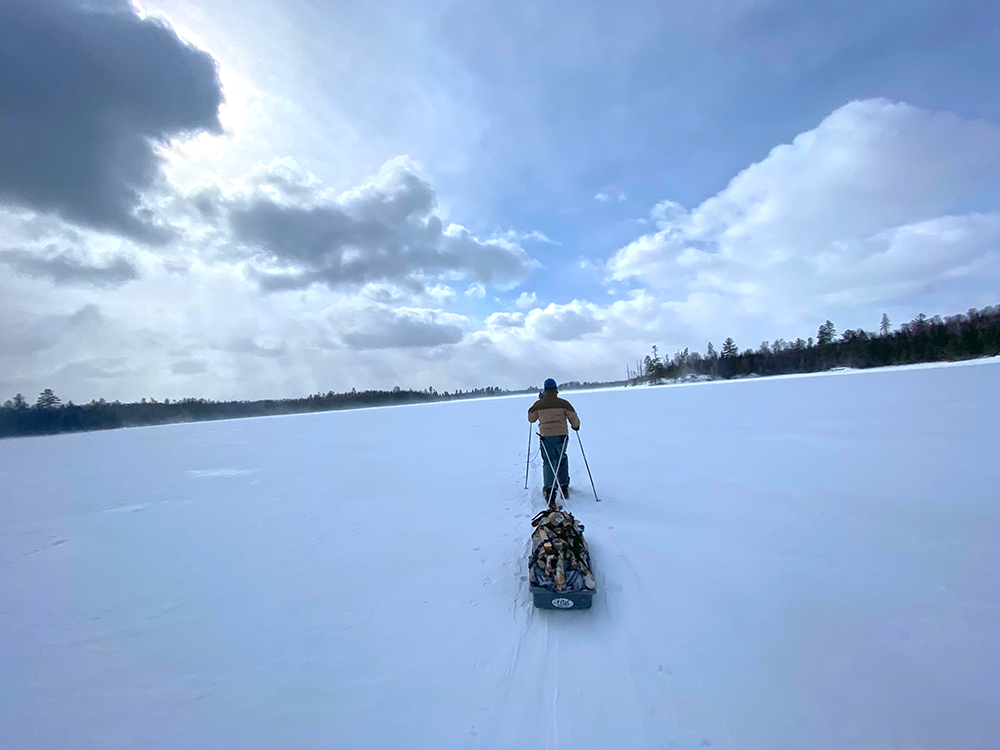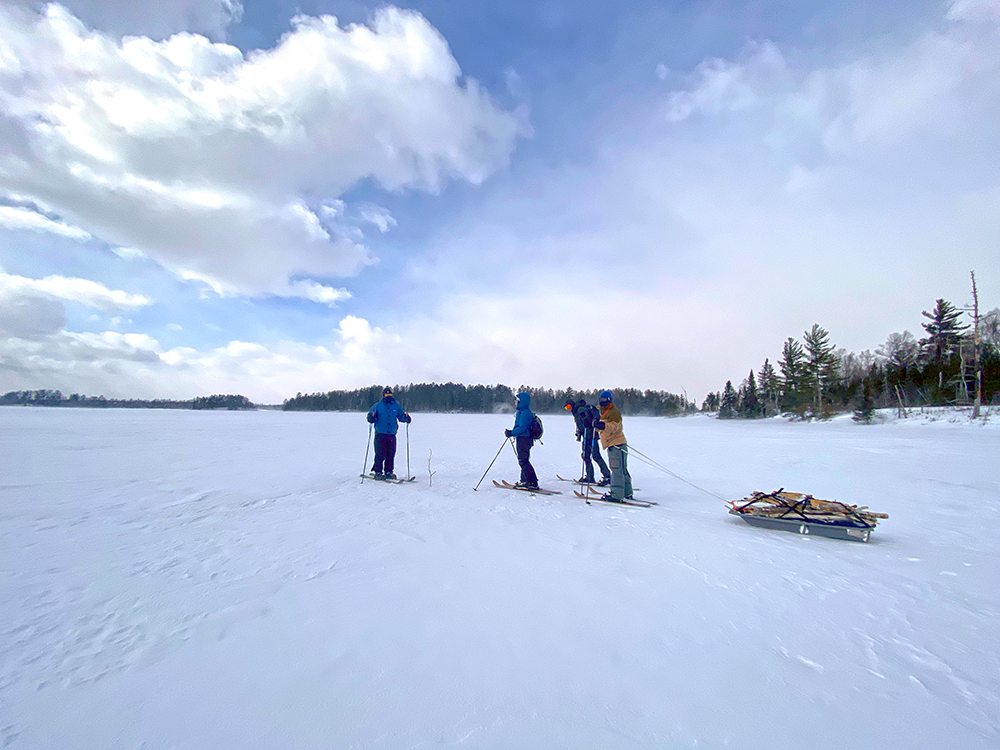BWCA Adventure | Part One: Chill Out
It’s -22º and believe it or not, I’ve camped in colder temps. As I wake, the air on my face feels like cold metal. Everything is still outside - not a breath of air nor sound of beast. Light is beginning to flood the white canvas tent.
I look around and the floor is filled with a rainbow of lumpy sleeping bags. It’s hard to tell that there is a person in each, they’re snuggled so low. Stirring quietly, I get up, ready to brave the outdoors for a very quick bathroom break. Ooof, that’s brisk. The reward for the morning trek is that the sun is beginning to break through the trees, casting long rays of yellow and orange. I’m stopped by the beauty around me as I peer over the expanse of lake from our campsite in the Boundary Waters Canoe Area Wilderness (BWCA) in northern Minnesota.
This season I’m a guide, taking others winter camping into this gorgeous, wild place. I’m so happy, that I hardly notice the cold. This trip though, is with my husband, Andy and our three friends. No official guiding needed. Three are seasoned winter campers and two are newer to winter camping.
A couple of days ago, five of us headed out from Ely, Minnesota, our vehicles laden with four sleds of gear and food. In the preceding days, we spent hours packing, rechecking lists and buying groceries for our four day adventure. Knowing the forecast is showing some pretty cold temps, we’re double checking everything as ol’ man winter doesn’t allow big margins of error.
The BWCA is a million acre wilderness, bordered on one side by Canada. Only about 3,500 visitors explore it in the winter compared to 150,000 in other seasons. It’s safe to say we’ll have plenty of solitude.
Reaching Snowbank Lake entry point, we unload all of the sleds and gear, taking last minute bathroom breaks and filling out the required permit. Anticipation is high and everyone chatters about how best to finish packing the last few items that have rattled around in the truck.
Looking over the lake, the route is obvious as there is a snow trail packed and marked by the occasional pine branch. Gliding under blue-bird skies, we follow it a mile to the first portage trail that will take us to Parent Lake. It starts off with a decent little scramble, especially with the weight of sleds behind us. It’s hilly and not without a few stops and near misses to avoid the trees. The trail is narrow, but we’re relieved we don’t need to break it as someone was recently over it.
After about a quarter mile, we drop down to Parent Lake. A trail follows the north side of the lake, close to the two campsites that dot the lake. It’s clearly an old trail from previous winter campers, We follow it as it takes us along a shoreline of jack pine, finally terminating at the eastern side. From here we take another portage trail to Disappointment Lake. It’s an easy portage and we cover the 80 rods (.25 mile) quickly.
We’re greeted at the end of the trail by line of fairly fresh tracks. They are cat like and fluffy around the edges. We immediately know a Canadian lynx has come along for a drink in the bit of open water flowing from the lake. We’ve been hearing reports that lynx have been prevalent in Ely this winter. Maybe there’s an increase in their prey, the snowshoe hare. We’ve certainly seen plenty of their prints.
After a quick snack and drink, we push forward, covering the last mile to camp, passing by a few of the islands that are on Disappointment Lake. No disappointments here for sure.
Our campsite is on a island studded with lanky red, white and jack pines. They gently bend and bow, welcoming us up towards the elevated campsite. We shove, heave and push the sleds up to camp, relieved and happy to drop our loads. As a thermos of wild rice soup is poured, we begin discussing who will do what camp chores. Everyone does an incredible job of jumping into work, creating a comfortable campsite. (Note: The USFS discourages winter campers camping on established sites, however if the conditions are not good, you won’t have much choice. We looked at setting up on the ice, however it was very wet and slushy. Either way, we did our best to leave no trace.)
A few head off into the woods to start searching for fire wood to cut while a couple more work on digging out a large square through 2’-3’ of snow. Shovels begin to fly as the snow is almost sugary. A little over an hour later we’ve carved out a place to put the winter tent and firewood is starting to stack nearby. Wood will be a key element to this trip and it’s an ongoing project. But with these views, it’s an enjoyable project.
The aluminum framework for the tent is put up, the peak rising to around six feet. We work together to drape the canvas over the top and anchor it down with a half-dozen guy lines. The stove is unpacked and brought inside. Someone fits the telescoping sections of the stove pipe together. Once it’s all together, I gather some shredded birch and a pile of spruce twigs and light the match. Sulfur fills the air and the combustibles start to pop and crack. It’s so comforting knowing we have shelter and warmth. As a surprise to the group, I put out a charcuterie board before dinner to which everyone gobbles as up we’re burning tons of calories working and staying warm.
A few continue to process wood while others set up the kitchen and bedding. Later, someone heads down to the lake to chop a hole in the ice for water. That evening we sit around the wood stove, plates filled with butter soaked green beans, mashed potatoes and steak topped with salsa verde. Ah, nothing like good, good trail food.
Sounds of wind wake us the next morning. It’s blustery. Winds are forecasted to gust up to 30 mph. Curls of snow tumble over the lake. Everyone is itching to explore a the nearby Thomas Lake Winter Trail and it accesses a remote 6 mile stretch from Disappointment Lake to Thomas Lake.
We bundle up, adding extra gear and hand warmers. Soup is heated and put in a thermos, along with other food for an on-trail lunch. Skin fully covered, we clip into our back country skies and head east, following a branch marked trail. We’re not sure if the trail we’d like to explore is packed, but we’ll soon find out.
Past the shelter of our island, the winds whip hard, nearly obscuring land a half mile off. I’m really hoping I don’t need to navigate in a white out. We figure that once we get onto the Thomas Lake trail, we’ll likely be sheltered from the wind.
We’re lucky as its has been packed recently by one or two winter campers. The wind falls quiet as we make our way over what must be a seasonal stream and bog like area. It flows through gorge like areas and it is stunning. Pine and birch line the banks along with granite from the Canadian Shield. pockets of bog open up here and there, dotted with tamarack and spruce. It’s a delightful and fairly easy trail, especially since it’s been packed.
We cover a little over a mile and stop near the curve of a beaver dam. Everyone helps to stomp out a place to have lunch. Mugs of noodle soup are poured and passed. Surrounded by the scenic landscape, it’s hard not to go further, but we need to head back to camp soon to cut more wood and we don’t want to get caught in conditions that may grow worse.
On the return trip we stop and cut down some dead birch. We’ve hauled one of the sleds for this purpose as a variety of wood might help our stove burn hotter. As we glide back onto the lake, it’s still blowing, but it’s the sun is working hard to burst through pockets of fast moving clouds. There’s a bit of blue sky to the northwest. Snow sparkles as it blows through the air reminding us that winter holds a lot of beauty and wonder.
We get to camp, hearts full from the great outting. That night we curl around the stove again as we feast on a Nordic-inspired salad of smoked salmon and veggies.
Tomorrow the weather is supposed to flip. While we’ll still have cooler temps, the wind will die down and the sun is supposed to shine. I have a scenic, day-trip in mind that I’ve been thinking about for a while. I believe it will get us into areas that nobody has ventured into this winter. We should be the first, fingers crossed.
Head over to Part Two of our adventure!
Disclaimer: Some of the information provided may not be accurate or up to date. Route and conditions change suddenly and frequently. Consult local resources such as outfitters and the ranger station before embarking on your own adventure. Careful planning and preparation is your responsibility. If you get into trouble, help may be hours or a full day away.


